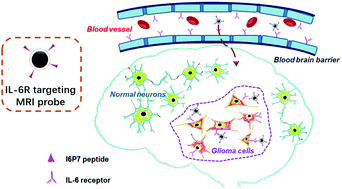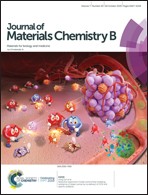I6P7 peptide modified superparamagnetic iron oxide nanoparticles for magnetic resonance imaging detection of low-grade brain gliomas
Abstract
Glioma, the most severe primary brain malignancy, has very low survival rates and a high level of recurrence. Nowadays, conventional treatments for these patients are suffering a similar plight owing to the distinctive features of the malignant gliomas, for example chemotherapy is limited by the blood–brain barrier while surgery and radiation therapy are affected by the unclear boundaries of tumor from normal tissue. In the present study, a novel superparamagnetic iron oxide (SPIO) nanoprobe for enhanced T2-weighted magnetic resonance imaging (MRI) was developed. A frequently used MRI probe, SPIO nanoparticles, was coated with a silica outer layer and for the first time was covalently modified with interleukin-6 receptor targeting peptides (I6P7) to promote transportation through the blood–brain barrier and recognition of low-grade gliomas. The efficiency of transcytosis across the blood–brain barrier was examined in vitro using a transwell invasion model and in vivo in nude mice with orthotopic low-grade gliomas. The targeting nanoprobe showed significant MRI enhancement and has potential for use in the diagnosis of low-grade gliomas.



 Please wait while we load your content...
Please wait while we load your content...